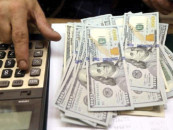Biomimicry: Why the secret of technological innovation lies in nature’s engineering
There are a number of fascinating examples of how animals are able to survive efficiently in their environment.

Since the dawn of time, nature has been toiling hard to construct everyone and everything to the highest benchmarks. There are a number of fascinating examples of how animals are able to survive efficiently in their environment. There are dragonflies that can propel themselves in any direction, sharks with skin bearing scales that help them swim faster and termites with the ability to construct dens that always keep a steady and comfortable temperature inside.
Human beings, throughout history, have tried to copy nature’s designs in their technological innovations. For instance, back in the 15th Century, Italian painter Leonardo da Vinci looked at birds’ anatomy while sketching his “flying machine”.
Even though his device was defunct, the Wright brothers did manage to build the first aeroplane in 1903 — after years of observing pigeons. Perhaps one of the most prominent nature-inspired technologies of the last century is the well-known hook-and-loop fastener, Velcro. The man who invented it, Swiss George de Mestral, is said to have been inspired by burrs he constantly removed from his dog’s fur.
“Natural” inspiration
But it wasn’t until the late 20th Century that many firms really started to devote time, money and often an entire team of designers, specifically charged with looking at biological solutions to technological hurdles they came across.
“It is important to look at nature — after all, it has had 3.8 billion years to come up with ideas,” says Janine Benyus, a natural history writer who coined the term “biomimicry” in 1998.
Ms Benyus was the first person to really describe this emerging science in her immensely popular book Biomimicry: Innovation Inspired by Nature.
So the world’s first Biomimicry Institute was set up in 2005, with a team of consultants who find solutions for businesses.
“They come in, we learn what it is they’re trying to do, and we look for that same function in the natural world — we do huge biological literature searches,” says Ms Benyus. “And it’s always a lot less energy, a lot less material, no toxins — a lot better.”
Ms Benyus’s clients range from Nasa to a multitude of companies of many different domains.
Butterfly’s wings
“There are three types of biomimicry — one is copying form and shape, another is copying a process, like photosynthesis in a leaf, and the third is mimicking at an ecosystem’s level, like building a nature-inspired city,” explains Ms Benyus.
Businesses are typically interested in the first two categories, she adds. Mirasol displays produced by a US mobile phone chip maker, Qualcomm, are a great example of the shape-based kind. Unlike regular screens with backlight or e-ink, these displays, which are still being developed, create colour by mimicking the way a butterfly’s wings reflect sunlight.
The displays play video just like any other tablet or smartphone, but have a much longer battery life and softer-for-the-eyes effect of e-ink readers.
“The innovation has been inspired by the same natural principles that enable the reflective shimmer you see from a butterfly’s wings or a peacock’s feather,” says Cheryl Goodman, senior marketing director of Qualcomm.
She explains that all the displays need for illumination is ambient light, thus being “both low power and viewable in a variety of lighting environments, including direct sunlight”.
The company says that the products are pretty much ready and just need some final touches before appearing on the market — with a number of firms already toying with idea of using them in their products.
Trains with beaks
Ms Benyus says that besides Qualcomm, many other companies call her team of consultants on a daily basis, asking them to find business solutions from the lengthy archive of our planet’s extensive history.
She lists just a few examples. For instance, a Canadian firm Whalepower mimics humpback whale flippers and uses the principle on wind turbines and fans, decreasing the drag and increasing the lift.
“And of course the high-speed train, Shinkansen bullet train in Japan — instead of having a rounded front, it has something that looks like a beak of a kingfisher, a bird that goes from air to water, one density of medium to another,” she adds.
“So as the train enters a tunnel, it’s quieter because there is no pressure wave as with ordinary trains; and it uses 15 per cent less electricity, too.”
However, these examples are tantamount to a drop in the ocean. From insect-inspired robots to flipper-like turbines, there are many devices and products which employ biomimicry in innovative ways. It seems like the future of technology lies in nature’s basic evolutionary processes and mechanisms.
Source: BBC News
Published in The Express Tribune, November 5th, 2011.


















COMMENTS
Comments are moderated and generally will be posted if they are on-topic and not abusive.
For more information, please see our Comments FAQ